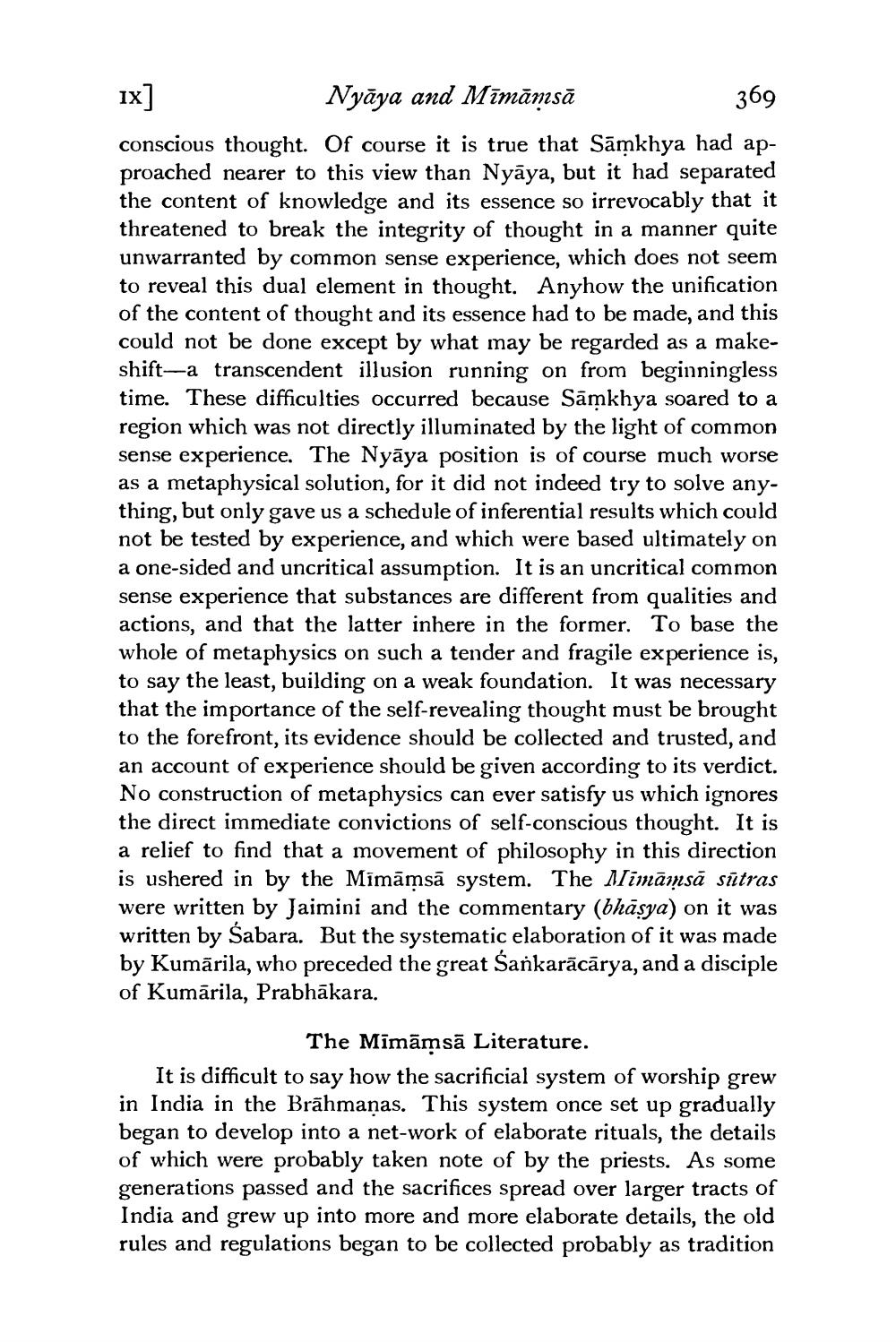________________
ix] Nyāya and Mīmāmsā
369 conscious thought. Of course it is true that Sāmkhya had approached nearer to this view than Nyāya, but it had separated the content of knowledge and its essence so irrevocably that it threatened to break the integrity of thought in a manner quite unwarranted by common sense experience, which does not seem to reveal this dual element in thought. Anyhow the unification of the content of thought and its essence had to be made, and this could not be done except by what may be regarded as a makeshift-a transcendent illusion running on from beginningless time. These difficulties occurred because Sāmkhya soared to a region which was not directly illuminated by the light of common sense experience. The Nyāya position is of course much worse as a metaphysical solution, for it did not indeed try to solve anything, but only gave us a schedule of inferential results which could not be tested by experience, and which were based ultimately on a one-sided and uncritical assumption. It is an uncritical common sense experience that substances are different from qualities and actions, and that the latter inhere in the former. To base the whole of metaphysics on such a tender and fragile experience is, to say the least, building on a weak foundation. It was necessary that the importance of the self-revealing thought must be brought to the forefront, its evidence should be collected and trusted, and an account of experience should be given according to its verdict. No construction of metaphysics can ever satisfy us which ignores the direct immediate convictions of self-conscious thought. It is a relief to find that a movement of philosophy in this direction is ushered in by the Mimāmsā system. The Nimāmsā sitras were written by Jaimini and the commentary (bhāsya) on it was written by Sabara. But the systematic elaboration of it was made by Kumārila, who preceded the great Šankarācārya, and a disciple of Kumārila, Prabhākara.
The Mīmāmsā Literature. It is difficult to say how the sacrificial system of worship grew in India in the Brāhmaṇas. This system once set up gradually began to develop into a net-work of elaborate rituals, the details of which were probably taken note of by the priests. As some generations passed and the sacrifices spread over larger tracts of India and grew up into more and more elaborate details, the old rules and regulations began to be collected probably as tradition




